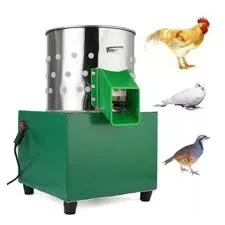pellet machine for fish feed
ធ្នូ . 19, 2024 17:07 Back to list
pellet machine for fish feed
Pellet Machine for Fish Feed An Essential Tool for Aquaculture
The aquaculture industry has been growing steadily over the past few decades, providing a sustainable source of fish and seafood to meet the global demand. An integral part of this industry is the production of fish feed, which plays a critical role in the health and growth of fish. Among the various methods of producing fish feed, the use of pellet machines has emerged as an effective solution. This article discusses the significance of pellet machines in producing high-quality fish feed, their operation, benefits, and considerations for aquaculture businesses.
Understanding Pellet Machines
A pellet machine, also known as a pelletizer or pellet mill, is a device that utilizes high pressure and heat to compress feed ingredients into small, uniform pellets. These machines are designed to process a variety of raw materials, including fish meal, corn, soybeans, wheat, and various additives. The process typically involves grinding the raw materials into a fine powder, mixing them thoroughly, and then subjecting them to high pressure in the pellet die, which shapes and sizes the feed into pellets.
Benefits of Using Pellet Machines for Fish Feed
1. Nutritional Value One of the most significant advantages of pelletized feed is its enhanced nutritional profile. The high-temperature processing involved in pellet production helps to eliminate harmful pathogens and increase the digestibility and bioavailability of nutrients. This results in healthier fish with improved growth rates and feed conversion ratios.
2. Reduced Waste Pelletized feed tends to have lower feed wastage compared to traditional feed forms such as flakes or powders. Fish are more likely to consume pellets entirely, which minimizes the uneaten feed that can lead to water pollution and affect water quality in aquaculture systems.
3. Customized Formulation Pellet machines allow aquaculture businesses to customize the nutritional composition of fish feed to meet the specific requirements of different fish species. By adjusting the formulation, producers can cater to the growth stages and dietary needs of their fish, leading to better overall health and productivity.
4. Improved Handling and Storage Pellets are easier to handle, transport, and store compared to loose feed. Their uniform size and shape allow for better packaging options, reducing the risk of spoilage and contamination.
pellet machine for fish feed

5. Economical While the initial investment in a pellet machine can be significant, the long-term benefits often outweigh the costs. By producing their own fish feed, aquaculture operations can reduce dependence on external suppliers, allowing for better control over feed quality and pricing.
Choosing the Right Pellet Machine
When considering the purchase of a pellet machine for fish feed production, there are several factors to take into account
- Capacity Determine the scale of your aquaculture operation and choose a machine that can meet your production needs. Smaller farms may opt for low-capacity models, while larger enterprises may require industrial-grade machines with higher throughput.
- Material Compatibility Ensure the pellet machine is compatible with the raw materials you intend to use. Different machines may be designed to handle specific types of ingredients, such as high-fat recipes or aquaculture-specific formulations.
- Ease of Maintenance A pellet machine that is easy to maintain will save time and reduce operational costs. Look for machines with accessible parts and comprehensive support from the manufacturer.
- Energy Efficiency Since production processes can consume significant energy, selecting an energy-efficient pellet machine can lead to substantial cost savings over time.
Conclusion
Pellet machines for fish feed play a pivotal role in modern aquaculture, providing an efficient way to produce high-quality feed tailored to the nutritional needs of various fish species. By investing in a pellet machine, aquaculture operations can improve fish health, reduce waste, and increase profitability. As the world increasingly turns to aquaculture for sustainable seafood production, the importance of optimizing fish feed through advanced technology such as pellet machines cannot be overstated. The future of aquaculture lies in the ability to produce and deliver high-quality feed, and pellet machines are central to achieving this goal.
-
High Performance Exhaust Fan – Efficient Ventilation Solutions for Home
NewsJun.10,2025
-
High-Quality Gestation Pen for Sows Durable Mobile Pig Pen & Simple Pig Pen Solutions
NewsJun.10,2025
-
High Quality Rabbit Cage Double Tier Designs & Welded Wire Mesh Supplier
NewsJun.10,2025
-
Floating Fish Feed Machine - High Efficiency Floating Fish Feed Extruder for Small Scale Production
NewsJun.10,2025
-
Premium Poultry Housing Solutions Mobile & Commercial Free Range Options
NewsJun.10,2025
-
Industrial FRP Fans Corrosion-Resistant Blades & Centrifugal Systems
NewsJun.09,2025






